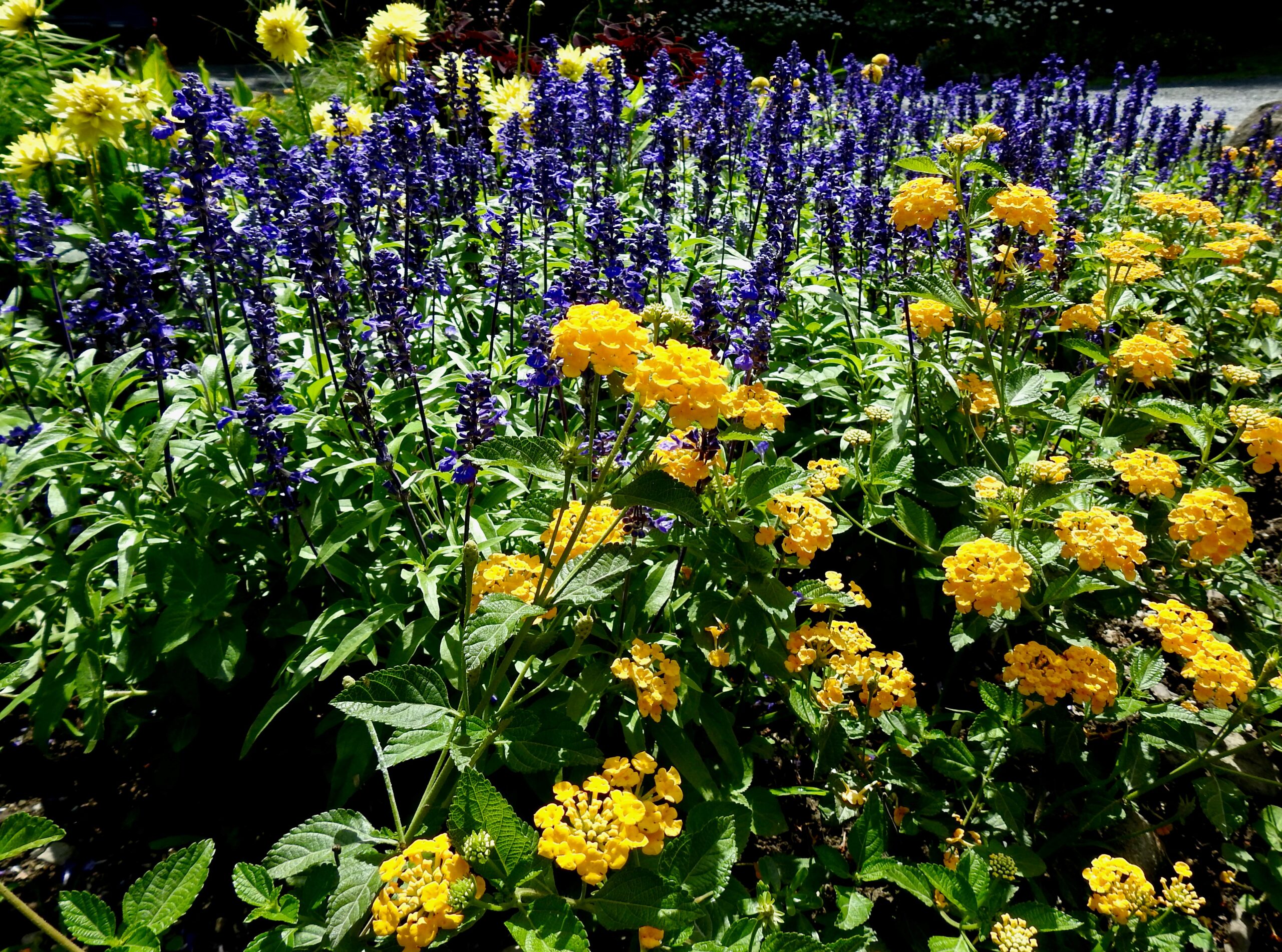By David P. Davis
Newsroom@DominionPost.com
Summer is in full swing here in West Virginia, with plenty of hot weather and rain. These are great growing conditions for everything in bloom, especially plants that are annuals and have only one season to make their mark.
At the West Virginia Botanic Garden, most of our plantings are perennial plants that come back, at least to some degree, year after year. Typically, perennials have a flowing window that ranges from days to a few weeks. Some annuals, however, can flower all summer long if given good growing conditions.
Blooming now at the WVBG in our entry bed along Tyrone Road is a combination of annuals designed to complement one another. One of our favorite color combinations for the tulips we plant in the fall and the summer replacements is a variation of purple/blue and yellow/orange/gold. This combo is not just a tip-of-the-hat to the WVU color scheme of blue and gold, but a recognition of just how pleasing to the eye this color scheme can be.
One annual that we have purchased over the years for this display is lantana, a perennial in tropical areas, treated as an annual in northern climates. This year, we selected a golden-yellow variety to ring areas of the entry bed. Lantanas are great annuals since once they take hold, they can continue to grow and bloom until the first frost. Our lantanas are set next to a large mass of blue annual salvia, Salvia farinacea.
Salvia is a large genus of plants (over 1,000 species) that includes shrubs, perennials and annuals, all commonly referred to as sage. At the WVBG, we have annual and perennial salvia, all purple or blue in color, and each produces a spike of blooms that are attractive to pollinators. Salvia blooms tend to be long-lasting, making them a great choice for many gardeners.
Behind our salvia, we have planted some bright yellow dahlias to add some larger swaths of color into the mix. These dahlias are about 12 inches tall with large, 3-5 inch blooms. We also added some yellow double echinacea blooms and then framed the scene with large clumps of deep red coleus to add another dimension to the palette. Coleus can be counted on for providing lots of colorful foliage throughout the season.
All of this greets you at the entry to the WVBG. Come explore all our garden beds as we head into our early summer, full-bloom season!




